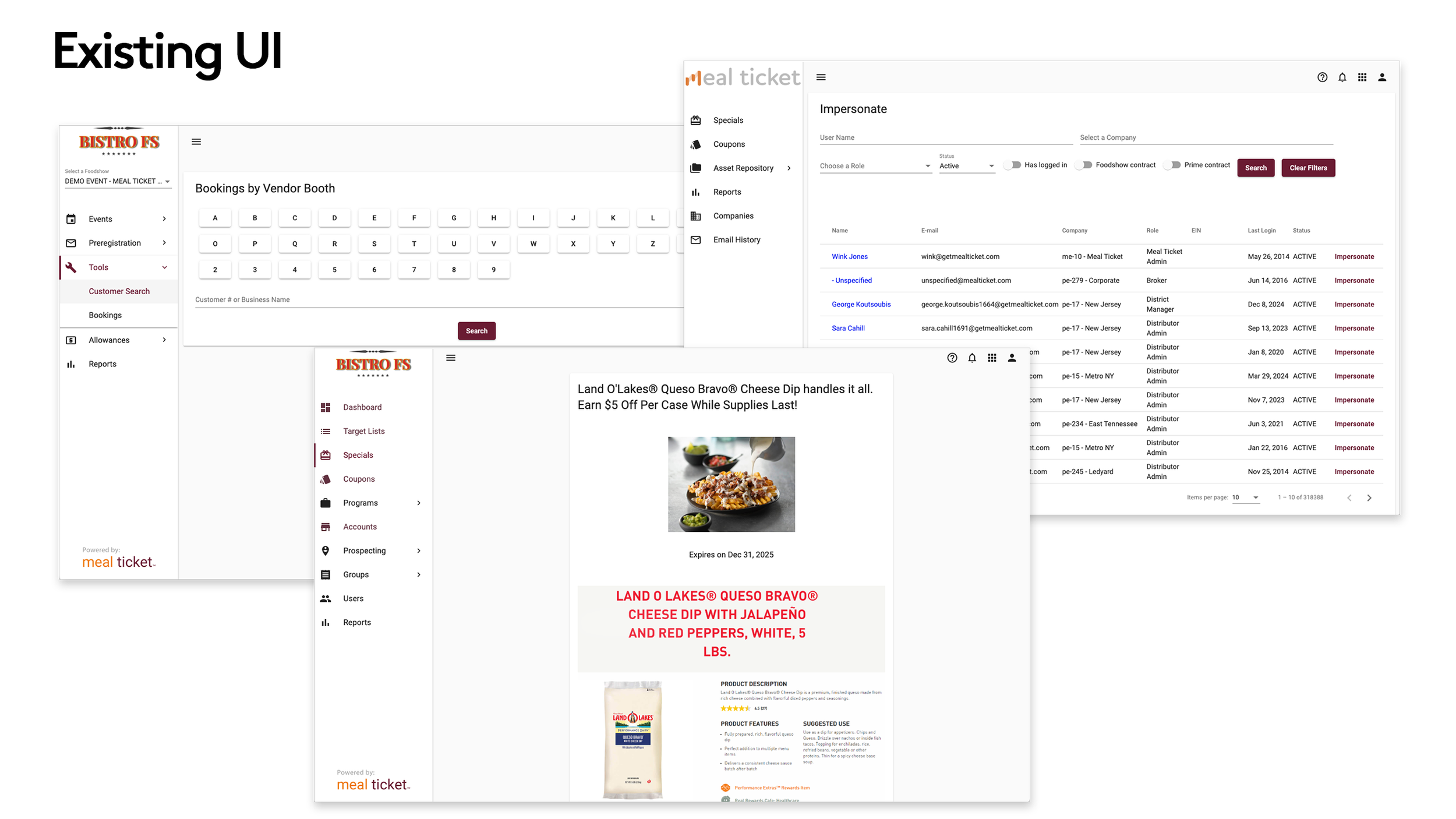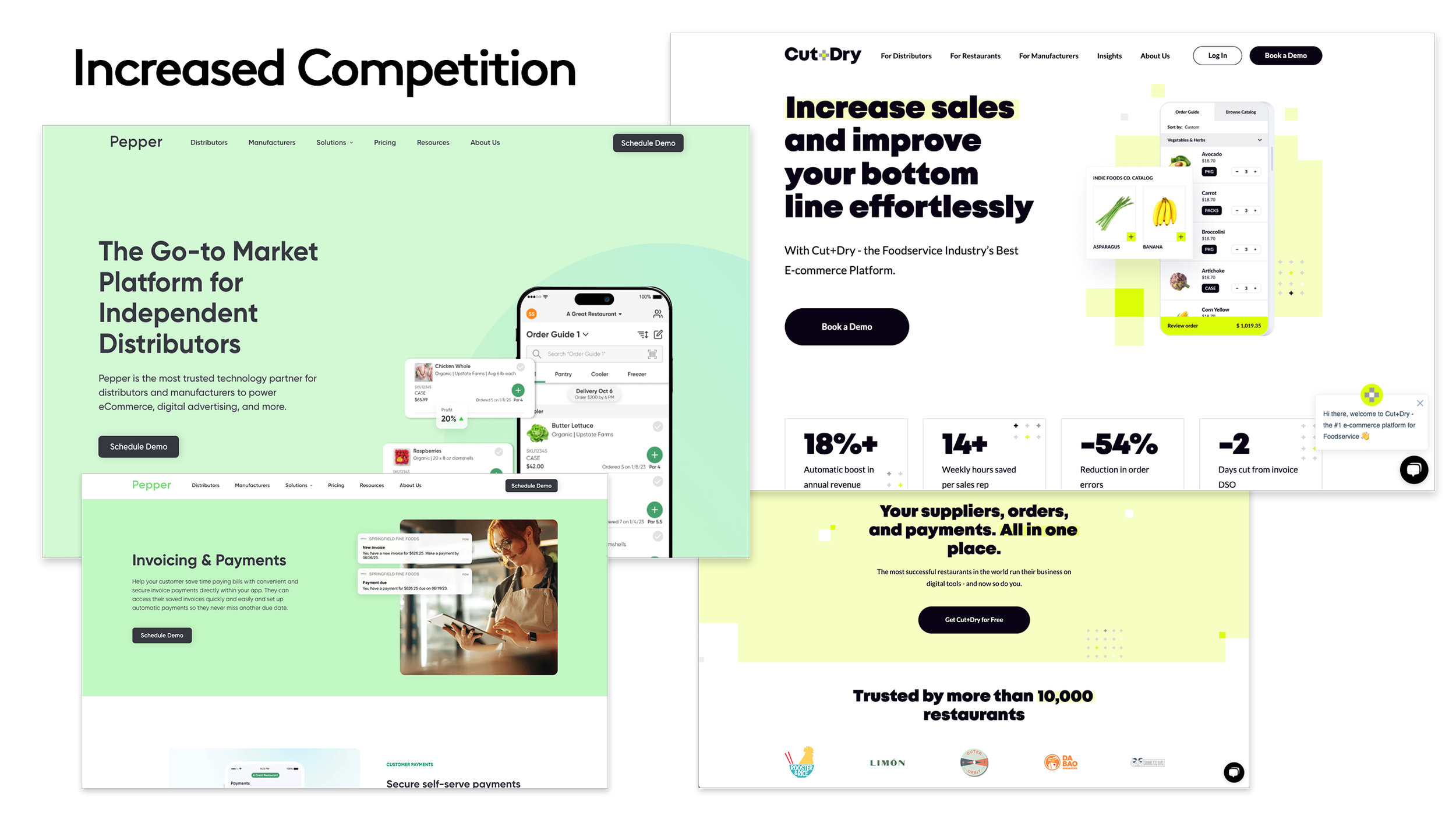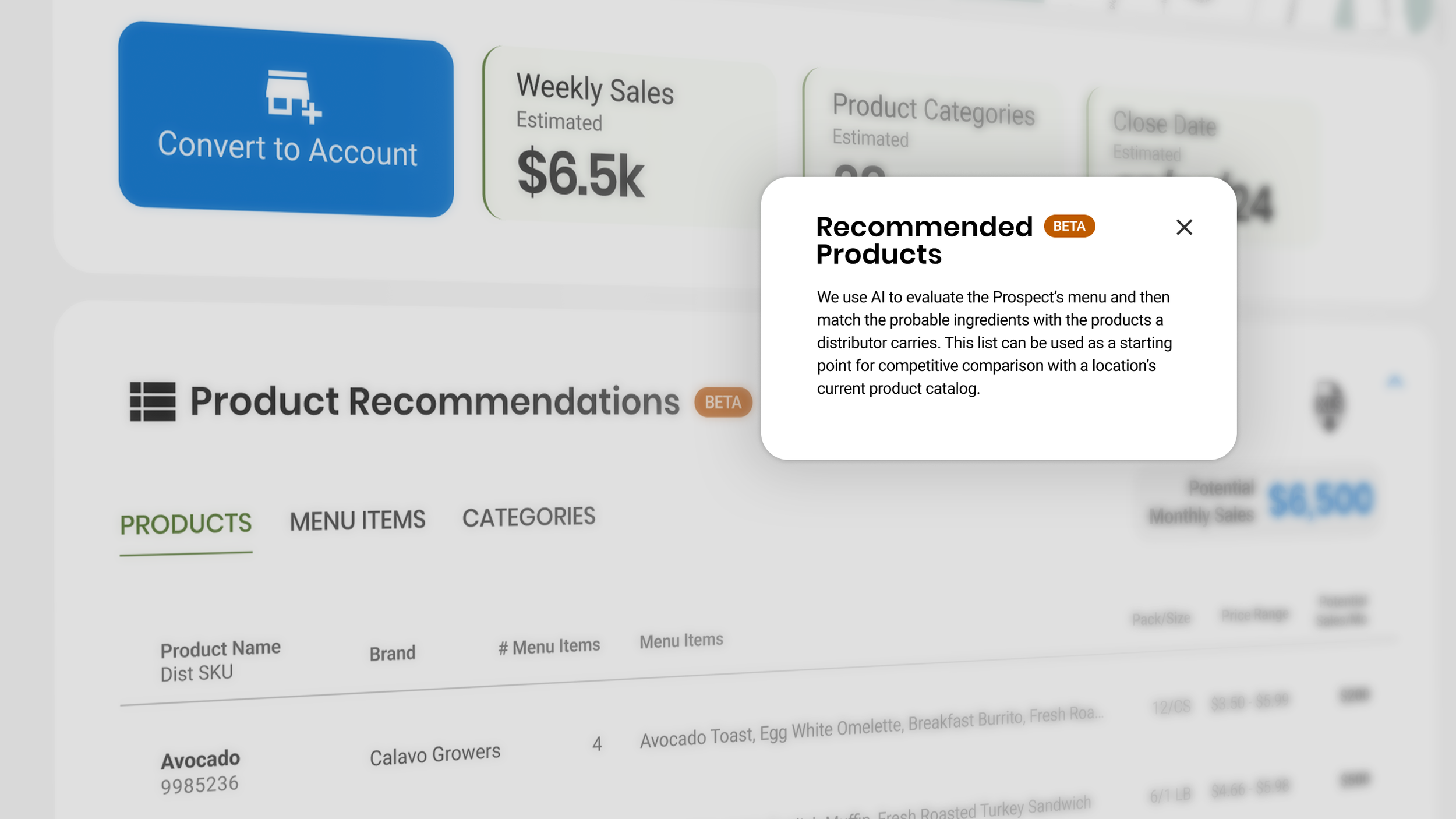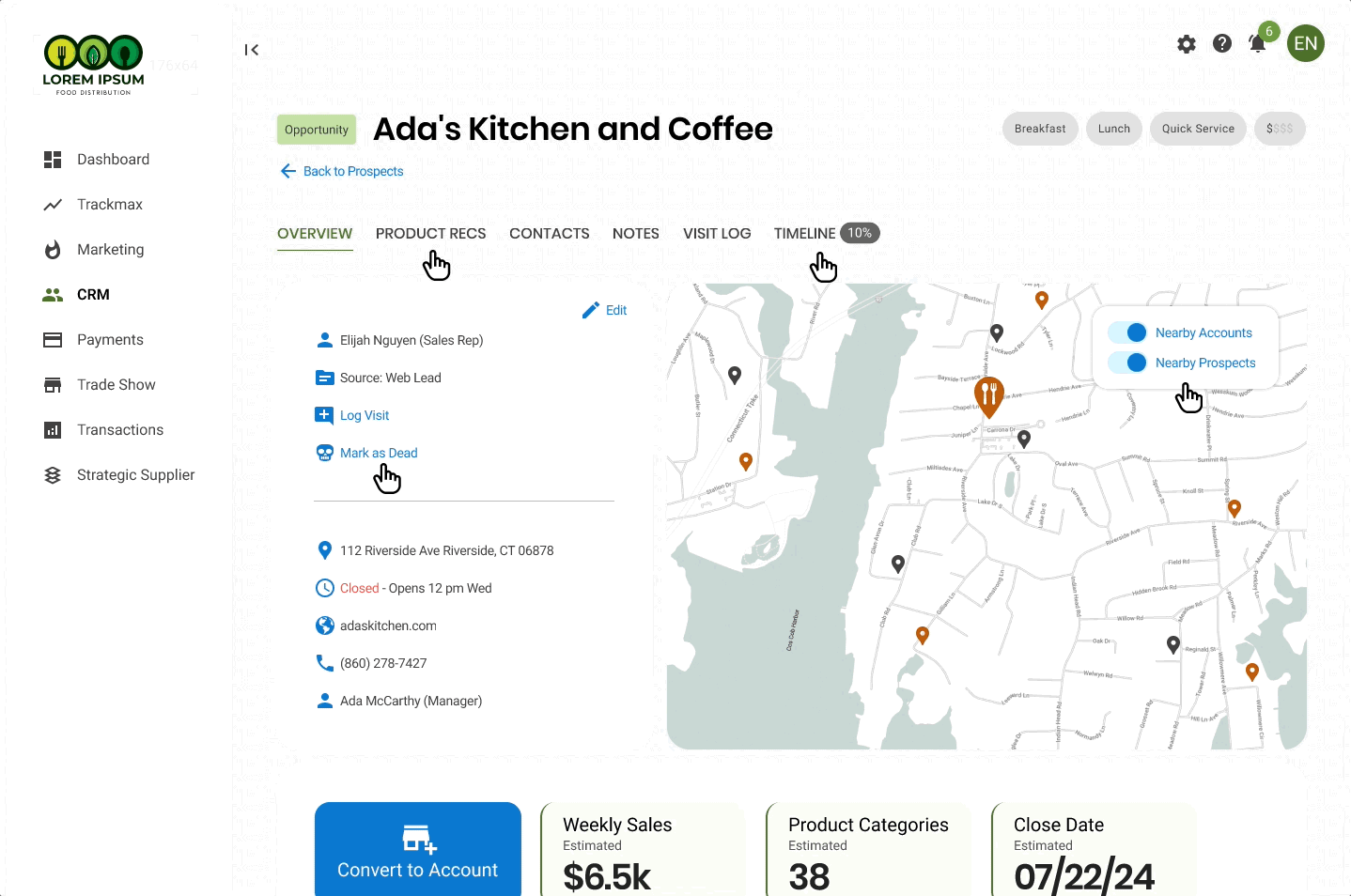Meal Ticket - Redesign Phase I
Meal Ticket is a software company specializing in solutions for the food service industry. Founded in 2010, it provides SaaS tools aimed at increasing operational efficiency and profitability for food distributors, manufacturers, and restaurant operators. Their product suite includes business intelligence tools designed to optimize earned income programs, target new business opportunities, and enhance engagement between operators and suppliers. Once, they were the de facto standard, but today they face competition.
THE SETTING
Like most SaaS tools that have been around for over a decade, Meal Ticket has reached the point where it struggles with legacy frameworks and a cobbled UI from scope-creep over the years. With the emergence of some competition in the industry, customers are beginning to see that they have a choice when it comes to their operational software.
I was asked to do a complete audit of the Meal Ticket platforms and offer some revised workflow patterns and UI designs in order to better compete with the new software available in the food distribution space.
Meal ticket was designed and built by engineers. No design team exists.
THE CHARACTERS
There are 24 unique user personas for the Meal Ticket platform. The UI is roles-based (RBAC) and must be flexible/adaptable from an Information Architecture perspective. Four main roles are:
Meal Ticket Admins
Dist/Sup Admins
Sales Reps
Accounting
THE CONFLICT
Once upon a time, Meal Ticket was the only game in town. Today food distributors have a choice. With razor-thin margins, it is a considerable hurdle for an embedded system to be replaced, but it is happening. Meal Ticket knows they must improve workflow efficiency, increase reporting features, eliminate unfriendly UI patterns, remove confusing processes, and begin using AI to offer increased insights into sales opportunities.
Meal Ticket is self-aware enough to recognize how the industry is changing and without an integrated design team, they reached out to me due to my past relationships with the company’s founder.
THE BIG IDEA
By exceeding feature-set and UI/UX parity with the competition, Meal Ticket can retain and surpass its leading status in the industry.
While having a history and relationship with a customer is a huge advantage in any industry, when less expensive, less buggy, more attractive options are presented, some customers will change SaaS providers. It’s just business, and it’s a good thing. After a dacade of growth and feature scaling, Meal Ticket recognizes they must update their UI, improve their UX, fix long-standing pain points, increase efficiency and add new features like AI insights in order to compete in the next decade.
THE RESOLUTION
In the past 12 months I have performed a thorough UI audit, identified weak areas and pain points, interviewed multiple user groups, redesigned dozens of components, and created easy-to-follow Figma workflow prototypes. This was Phase I.
From here, the Product Owners and Engineering Leads will discuss their priorities and create a development plan for the next several quarters. I will be brought in to refine existing designs and to generate any missing workflows. Post-development I will conduct a QA audit and oversee the launch from a design perspective. Ideally, some user research will follow in order to quantify the objective and subjective effects of the updates.
THE RESULTS
While all stakeholders are very pleased with the direction we are heading, results from a business POV are TBD. Because long-standing workflow pain points are being addressed and multiple inefficiencies are being removed, we know that speed-to-task-completion will increase and that user satisfaction will improve by eliminating frustrating workflows. New AI tools are being added as well and Meal Ticket is excited to learn how that will increase revenue over time.





